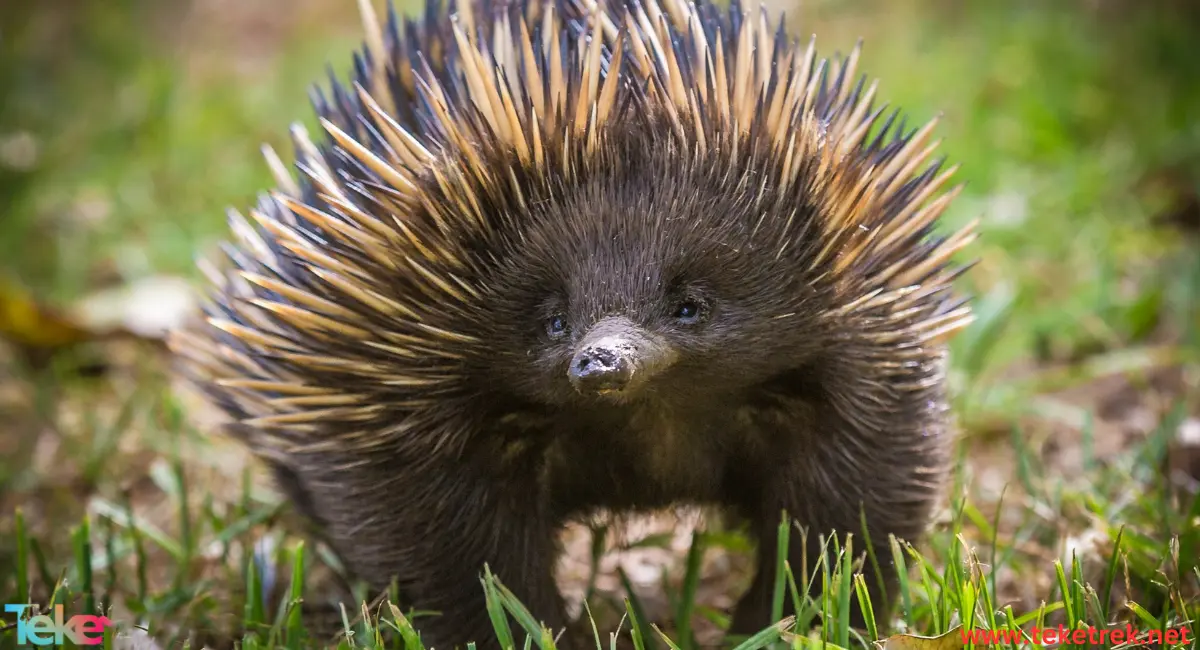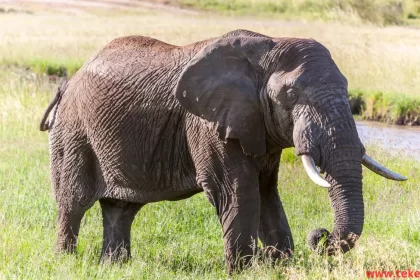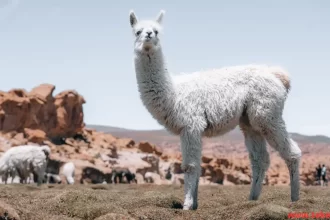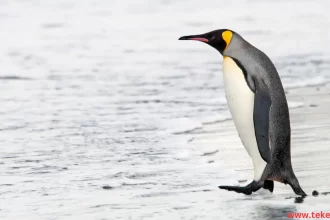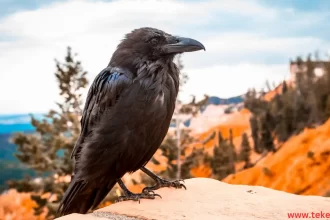Echidnas are one of the few mammals that lay eggs, known as monotremes.
They belong to the class of mammals called monotremes, from the family Tachyglossidae.
Let’s explore more about these animals from teketrek.
About Echidnas
There are three species of long-beaked echidnas, endemic to New Guinea, and one species of short-beaked echidna, found mostly in Australia with small populations also in New Guinea.
Echidnas are also known as spiny anteaters.
They can reach lengths of about 35-75 cm.
Echidnas are covered in sharp spines made of modified hair. They are not aggressive animals, but when threatened, they will curl up into a ball to protect themselves, much like hedgehogs.
While not venomous, it’s best not to touch them.
Echidnas forage on the ground at night or during the day, using their snouts to search for ants and termites to eat.
The beak of echidnas is covered with electroreceptors, allowing them to detect electrical signals emitted by the muscles of their prey.
Once prey is located, the echidna uses its strong claws to extract it before quickly capturing it with its long, sticky tongue

Places of Occurrence for Echidnas:
It can only be found in Australia and New Guinea. Echidnas have a wider distribution than any other native mammal in Australia. They prefer alpine grasslands, coastal forests, and inland deserts.
Reproduction in Echidnas:
Echidnas typically breed between July and August.
Male echidnas have a four-headed penis, while females have a two-branched reproductive tract. Only two heads are active at a time. The four heads are believed to help male echidnas produce more sperm and make them more competitive against other males.
Female usually lay one egg at a time. The egg enters a pouch in her abdomen for incubation.
After passing 7 to 10 days, the egg is ready to hatch. When the egg hatches, the length of the hatchling or Puggle is about 12 mm, and it weighs about half a gram.
The hatchling stays in its mother’s pouch for another six to eight weeks, giving its spine time to stiffen.
The Puggle drinks its mother’s milk until it is about seven months old. However, they do not suckle from nipples.
The mother secretes milk through glands, and the baby licks up the milk.
Female echidnas raise their young in a nest made of dry tree leaves inside a tree trunk.
Both parents care for the offspring, with the male echidna occasionally carrying the baby on its back.
Parents regurgitate partially digested insects to feed their young.
Lifestyle of Echidnas:
Echidnas are active during the day, but in warmer months, they often become nocturnal to avoid the heat.
The body temperature of echidnas is 32 degrees Celsius. Their metabolic processes are very slow. This is believed to be one reason they can live up to 50 years, according to National Geographic magazine.
During cold winter months, echidnas enter hibernation in burrows.
Regardless of the time of year, echidnas cannot enter rapid eye movement (REM) sleep due to their body temperature, except when it’s around 25 degrees Celsius.
Diet of Echidnas:
Nature has specialized echidnas to feed primarily on small insects.
These small insects vary among echidna species, each having its own preferences.
Smaller echidna species focus on tree-dwelling insects, while larger ones can penetrate the hard layer of ground insect nests.
Echidnas employ a feeding strategy of rapidly licking up large numbers of ants and termites to avoid the defenses of invertebrates

Weird Habits of Echidnas:
Despite being solitary creatures, echidnas engage in bizarre group mating rituals once a year between June and September.
A train of about 10 male echidnas follows a female until she’s ready to mate. When she signals readiness, males dig a trench around her and try to push each other into it.
The peculiarity doesn’t stop there. Male echidnas have a four-headed penis, using two heads at a time to inseminate the female’s bifurcated reproductive tract. This exchange occurs with each mating.
After about 22 days of mating, the female echidna lays a single leathery egg in a pouch on her abdomen, which hatches after 10 days.
Without nipples, the mother echidna feeds the weak, newborn puggle from milk secreted by specialized glands in her pouch.
After about seven weeks, the female echidna then transfers the puggle from her pouch to a burrow in the ground and leaves it hidden, returning every few days to feed it.
This behavior continues for another seven months until the young echidna is eventually left to begin its solitary lifestyle.
With a body temperature of about 32 degrees Celsius, echidnas have one of the lowest body temperatures among mammals. Lacking sweat glands, they can’t tolerate high temperatures.
During cold months, these animals enter a hibernation-like state in burrows, where male echidnas sometimes sneak in early to mate with females in hibernation
Frequently Asked Questions
- How long do echidnas live?
Echidnas can live a long life, with a lifespan of up to 45 years in the wild. This is likely due to their unusually slow metabolism and low body temperature.
- Is the echidna the same as the hedgehog?
echidnas and hedgehogs are completely different species. The echidnas is a type of ant that is characterized by having spines on its body for self-defense, while the hedgehog is a small spiny mammal with a body covered in quills. It is a nocturnal animal that primarily feeds on insects, worms, and small mammals.
- What do echidnas look like?
The echidnas, or anteater, has a strange and unique appearance, with a tapered body covered in sharp spines. It has a long nose-like beak that it uses to search for ants and insects. It also has a long, sticky tongue that it uses to capture its prey, as well as strong feet that enable it to dig into the ground to search for food.
In conclusion, echidnas play a vital role in the ecosystem by helping regulate ant and insect populations. Their presence reflects the diversity of life and environmental adaptability, contributing to the health of the ecosystem. Therefore, it’s important to care for and protect these creatures by preserving their natural habitats, supporting research, and collective efforts to maintain environmental balance and enhance biodiversity in communities and ecosystems.

